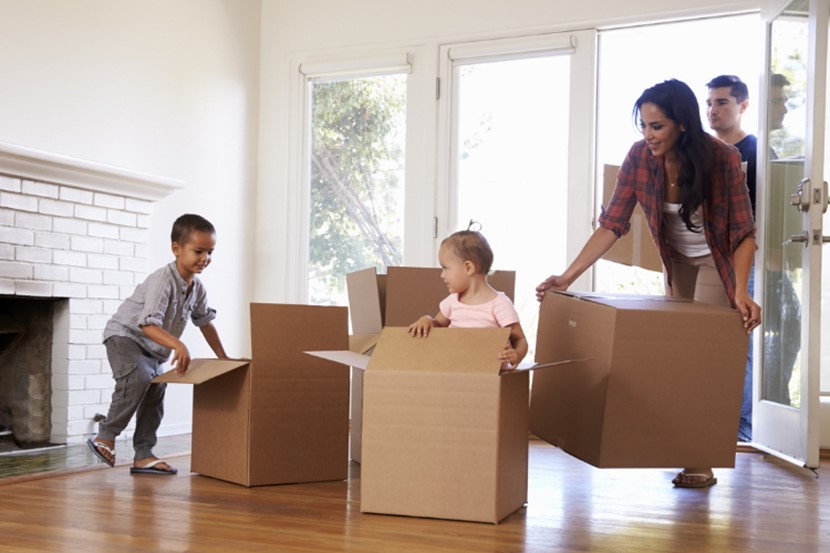Tips for moving house

Moving house is a mission. Moving house when you have small children can seem like Mission Impossible! But with the right preparation, a well thought out action plan, and some deep breaths - it can be done! Here are our top tips based on the combined experience of packing up our families and moving across town.
Communicate
Spend time explaining to your children the process of moving house. Break it down into steps - packing our things into boxes, loading boxes onto a truck, driving them to a new house, unpacking them etc... "Moving House" can be a confusing concept and some children expect their current home is going to be picked up by a giant crane and plopped down again in a new neighbourhood.
If possible, give children some reasons for the move, i.e. we need a bigger house so baby sibling can have a bedroom, we need to be closer to your school/Dad's work/Grandma/the beach... Children appreciate logic, and knowing why things are happening will help them cope with the change.
Get books from the library illustrating moving house. Do some role-play and pretend to move house with toys, or a dolls 'house if you have one.
Don't be surprised if you have to repeat your explanations of the moving process several times. Yes, all your toys will be at the new house. Yes, your bed will be at the new house. Yes, you can bring your bike to the new house...
Take a drive to your new neighbourhood and point out features i.e. the kindy, library, dairy, etc - anything that will help your child familiarise themselves with their new environment. Show children your new house, even just from the road if you can't show them through it.
Involve children in the process
You are probably going to be most productive in your packing when your children are not around, but getting older children to help with the packing will help them understand the process. Even toddlers could help pack toys into a box, but leave out any special toys and allow these to travel with your child in a separate bag that they can look after.
On the day
Ideally, have a friend or family member look after your children on moving day or put them in daycare. If that isn't an option, make sure you pack a bag with everything your children will need (nappies, wipes, snacks, toys, drinks, sleeping requirements) and keep it handy. If your children are being looked after by someone else on moving day, have them arrive at the new house in the afternoon so they have time to settle in and explore their new home before bedtime.
Have plenty of snacks and drinks available - pack them in a clearly marked separate box and put it in the kitchen as soon as possible so your helpers can help themselves to refreshments.
Set-up your children's rooms first so they can see some resemblance of normality as soon as possible. For older children, leave them a box or two of toys and books that they can unpack themselves, giving them a sense of ownership in their new space as they find homes for their special things.
Put name tags on the new bedroom doors for your children to discover. Alternatively, you could give older children the job of making signs and naming the doors themselves.
Next make up all the beds, so when you are all totally exhausted, at least you'll have a place to sleep. It's a good idea to put the same sheets back onto the children's beds in the new house, so they smell and feel familiar.
Alternatively, consider "camping out" on the first night and have the whole family sleep in the master bedroom on mattresses on the floor. This plan could work well for children that are particularly unsettled, adding some fun to the first night in a new house.
Settling In
Despite the best plans, moving day will be extremely busy. Make sure you sit down with your children towards the end of the day to check in with them about how they are feeling. Babies and toddlers will take to their new surroundings with little concern, but older children could feel quite unsettled. Keep their routines in place where possible and allow them plenty of time to talk about their feelings and ask any questions.
Childproofing
Take a detailed tour of your new address, inside and out, and make a list of things to do to make it safe for your family. The previous owners or tenants may not have had small children so there could well be safety issues with doors, cupboards, windows, fences, gates, stairs, taps, water features... Check out our Safety pages for more ways to child-proof your home.
Check to see if any doors lock in a way that could trap children, for example bathroom doors that lock with a push-button on the knob and may not have a key.

